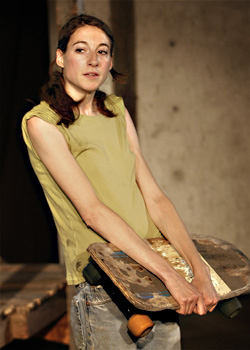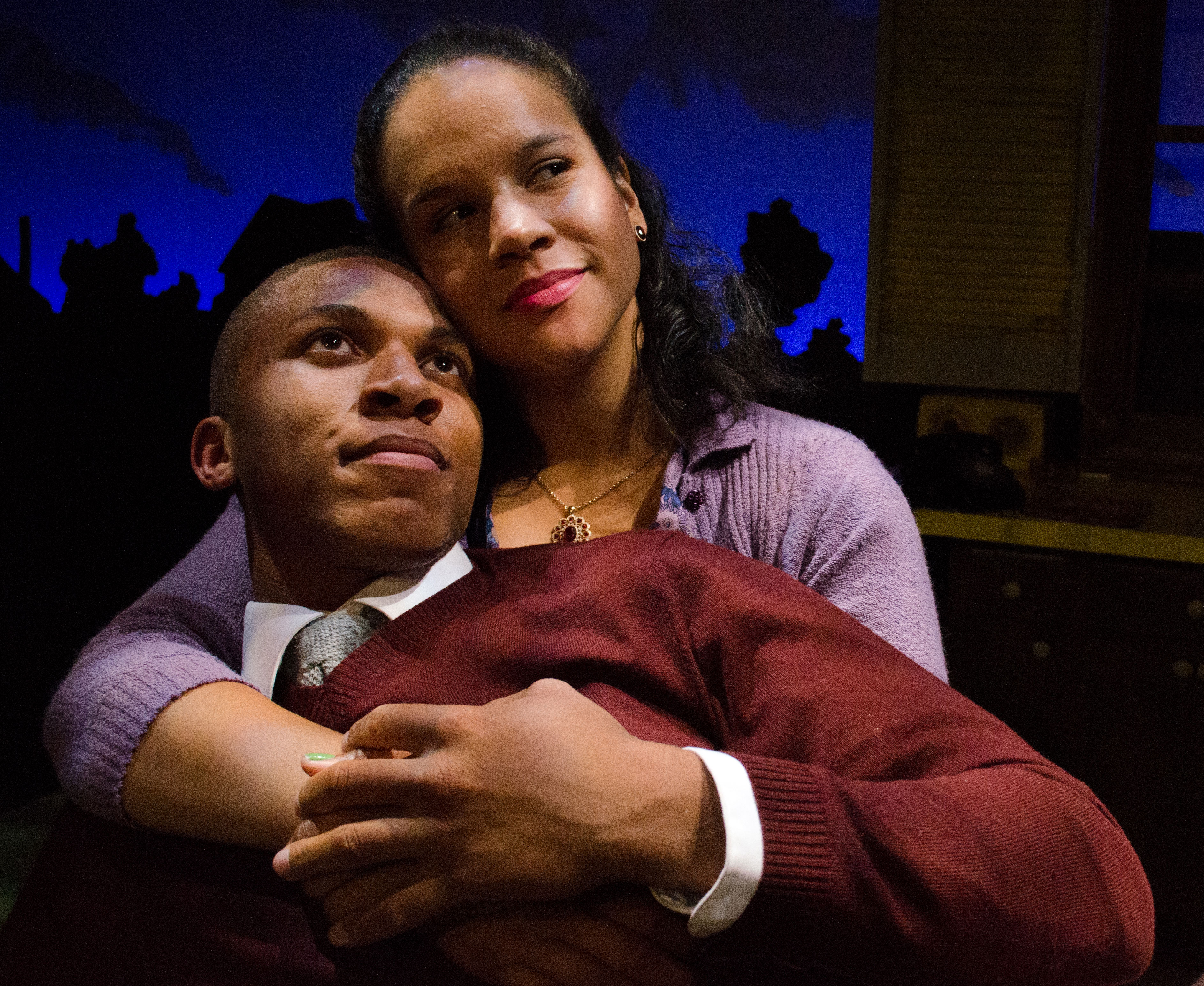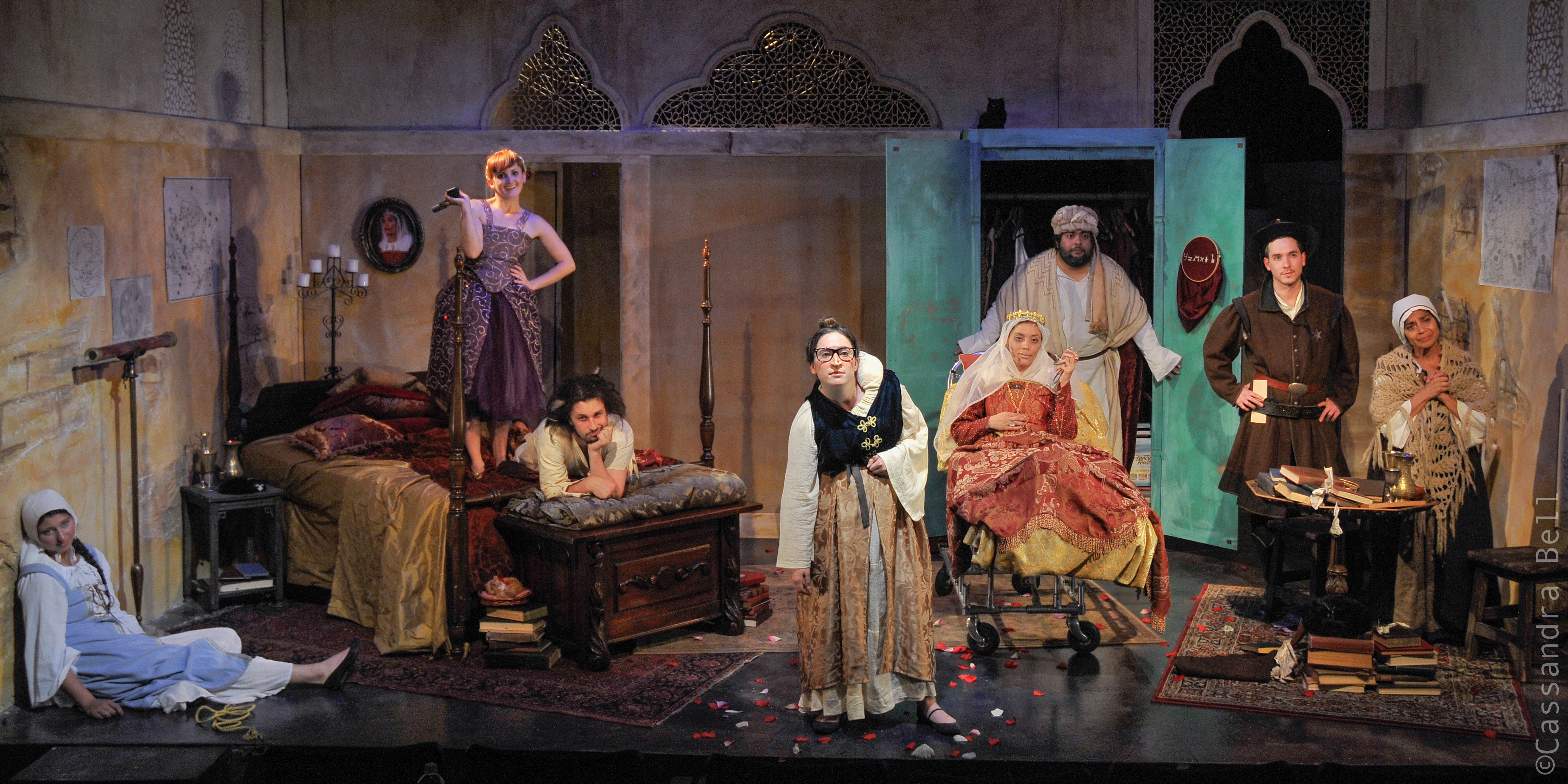Long before Jason, Freddy Krueger, and that scary guy from Gorton’s with the fishhook knew what you did last summer, young campers gathered in the moonlight to scare the beejeebers out of one other. The K of D is just such a ghost story—the kind of stemwinder best woven once the s’mores are gone and the campfire dies down and the only prop is a flashlight clutched just below the chin. Playwright Laura Schellhardt’s storytelling prowess is nothing short of magical, but it’s sublime acting by Renata Friedman and inventive stagecraft that make her clever dramedy work so well.
“I got one,” the narrator announces as the one-person play opens. Sitting at an abandoned dock, clutching her skateboard, she begins to detail the mysterious goings-on in Saint Mary’s, Ohio—events, she confides, that would be known collectively as…”The Summer of the Death.” It’s impossibly cheesy and delightfully creepy all at once—about as believable as a snipe hunt, yet told with the kind of wide-eyed certitude that could make one believe every unexplained phenomenon has a certain basis in fact.
Perhaps the narrator is one Charlotte McGraw; then again, perhaps not. Our guide through this tale of the macabre is remarkably chatty, while the Charlotte described in her story quit talking entirely once her twin brother was killed. Before that, she was talkative enough, we learn, if you’ll allow that a secret language of twins involving clicks and whistles could be construed as talking. Sadly, Charlotte witnesses her brother’s death when his skateboard antics put him in the path of arusted auto driven by the town ne’er-do-well, a greaseball named Johnny Wistler. Those who witnessed the collision swear that Jamie McGraw “flew” after the impact, but the twins’ parents explained that God simply called the boy home. Our narrator isn’t so sure: “When God wants you,” she opines, “He don’t send a Dodge.”
By all accounts, Charlotte receives one parting gift from Jamie as he was shuffling off his mortal coil—a kiss. On the lips. It’s a gift that keeps on giving, too, as various townspeople catch Charlotte judiciously putting down sick dogs and becoming ever more reclusive lest she demonstrate her special talent by accident. As her legend grows, so too does the cast of characters in K of D, until they include a menagerie of Charlotte’s schoolmates and family members, none of whom quite qualify as “normal.” Mom spends hours upstairs watching the lights play off the bracelets she’s won year after year as the town’s English teacher, and dad Hal is an embittered alcoholic who has Charlotte performing tricks like a trained seal.
The circle of storytellers around the campfire widens to include aspiring slacker and loudmouth Quisp Drucker, the excitable Steffi Post (who emits a continuous stream of “Ohmygod ohmygod ohmygod”), a tramp-in-training bra named Becky Ray Voss, and a pair of fraternal dweebs named Brett (the would-be brains) and Trent (the hair-trigger brawn) Hoffman. Their oddball character traits are more realistic than any of the strange events they narrate taking place around town.
As it happens, Jamie’s death is merely a prelude. Soon there’s a new visitor to the town—an enormous bird no one’s seen before that bonds instantly with Charlotte. Then Jamie’s killer winds up owning the house immediately next door to the McGraws, setting in motion the inevitable showdown between the besieged households. Johnny Wistler taunts the McGraws, and neither Charlotte’s dad nor her motley bunch of buddies is about to let that pass.
Under the steady hand of director Braden Abraham, Friedman lets these characters erupt from her until we’re used to seeing her more as the host of a small-town population of schemers and skeptics than as any one of them in particular. She plays each character as if it were the only one she really cared about, adjusting her vocal inflection, speech cadence, and body language until by the second act we have a good idea of who’s about to speak simply by watching Friedman’s posture shift. Abraham makes sure that her bravura performance never distracts us from the mood of a great yarn being told with style.
Abraham also had a hand in crafting the main set piece for K of D, a well-used dock upon which only some of the action takes place. The audio cues are so tight here that Friedman can open and close invisible jars and the sound follows her every wrist movement. Everything in the production seems geared toward pulling us more deeply into the imaginations of these teenagers as they try to scare us without falling into the trance themselves.
Together, playwright, director, and actor are so good it’s scary.








